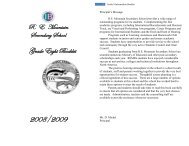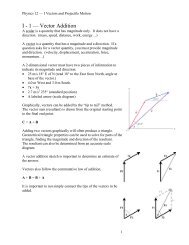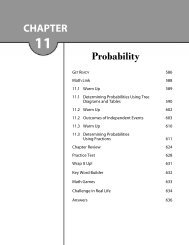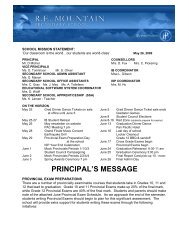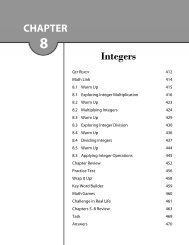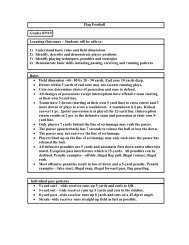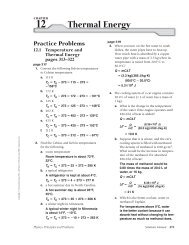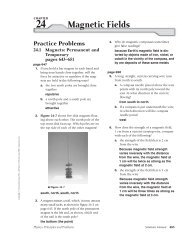Physics Solutions Manual
Physics Solutions Manual
Physics Solutions Manual
Create successful ePaper yourself
Turn your PDF publications into a flip-book with our unique Google optimized e-Paper software.
Chapter 4 continued<br />
3 Evaluate the Answer<br />
• Are the units correct? N is the correct<br />
unit for a tension, since it is a force.<br />
• Does the sign make sense? The positive<br />
sign indicates that the tension is<br />
pulling upwards.<br />
• Is the magnitude realistic? We would<br />
expect the magnitude to be on the<br />
same order as the block’s weight.<br />
98. Think Critically Because of your physics<br />
knowledge, you are serving as a scientific<br />
consultant for a new science-fiction TV<br />
series about space exploration. In episode 3,<br />
the heroine, Misty Moonglow, has been<br />
asked to be the first person to ride in a new<br />
interplanetary transport for use in our solar<br />
system. She wants to be sure that the transport<br />
actually takes her to the planet she is<br />
supposed to be going to, so she needs to<br />
take a testing device along with her to<br />
measure the force of gravity when she<br />
arrives. The script writers don’t want her to<br />
just drop an object, because it will be hard<br />
to depict different accelerations of falling<br />
objects on TV. They think they’d like something<br />
involving a scale. It is your job to<br />
design a quick experiment Misty can conduct<br />
involving a scale to determine which<br />
planet in our solar system she has arrived<br />
on. Describe the experiment and include<br />
what the results would be for Pluto<br />
(g 0.30 m/s 2 ), which is where she is supposed<br />
to go, and Mercury (g 3.70 m/s 2 ),<br />
which is where she actually ends up.<br />
Answers will vary. Here is one possible<br />
answer: She should take a known mass,<br />
say 5.00-kg, with her and place it on the<br />
scale. Since the gravitational force<br />
depends upon the local acceleration<br />
due to gravity, the scale will read a different<br />
number of newtons, depending<br />
on which planet she is on. The following<br />
analysis shows how to figure out what<br />
the scale would read on a given planet:<br />
Identify the mass as the system and<br />
upward as positive.<br />
F net F scale on mass F g ma 0<br />
F scale on mass F g<br />
F scale on mass mg<br />
Pluto: F scale on mass<br />
(5.00 kg)(0.30 m/s 2 )<br />
1.5 N<br />
Mercury: F scale on mass<br />
(5.00 kg)(3.7 m/s 2 )<br />
19 N<br />
99. Apply Concepts Develop a CBL lab, using<br />
a motion detector, that graphs the distance<br />
a free-falling object moves over equal intervals<br />
of time. Also graph velocity versus time.<br />
Compare and contrast your graphs. Using<br />
your velocity graph, determine the acceleration.<br />
Does it equal g?<br />
Student labs will vary with equipment<br />
available and designs. p-t graphs and<br />
v-t graphs should reflect uniform acceleration.<br />
The acceleration should be<br />
close to g.<br />
Writing in <strong>Physics</strong><br />
page 116<br />
100. Research Newton’s contributions to physics<br />
and write a one-page summary. Do you think<br />
his three laws of motion were his greatest<br />
accomplishments? Explain why or why not.<br />
Answers will vary. Newton’s contributions<br />
should include his work on light<br />
and color, telescopes, astronomy, laws<br />
of motion, gravity, and perhaps<br />
calculus. One argument in favor of his<br />
three laws of motion being his greatest<br />
accomplishments is that mechanics is<br />
based on the foundation of these laws.<br />
His advances in the understanding of<br />
the concept of gravity may be suggested<br />
as his greatest accomplishment<br />
instead of his three laws of motion.<br />
84 <strong>Solutions</strong> <strong>Manual</strong> <strong>Physics</strong>: Principles and Problems<br />
Copyright © Glencoe/McGraw-Hill, a division of The McGraw-Hill Companies, Inc.





